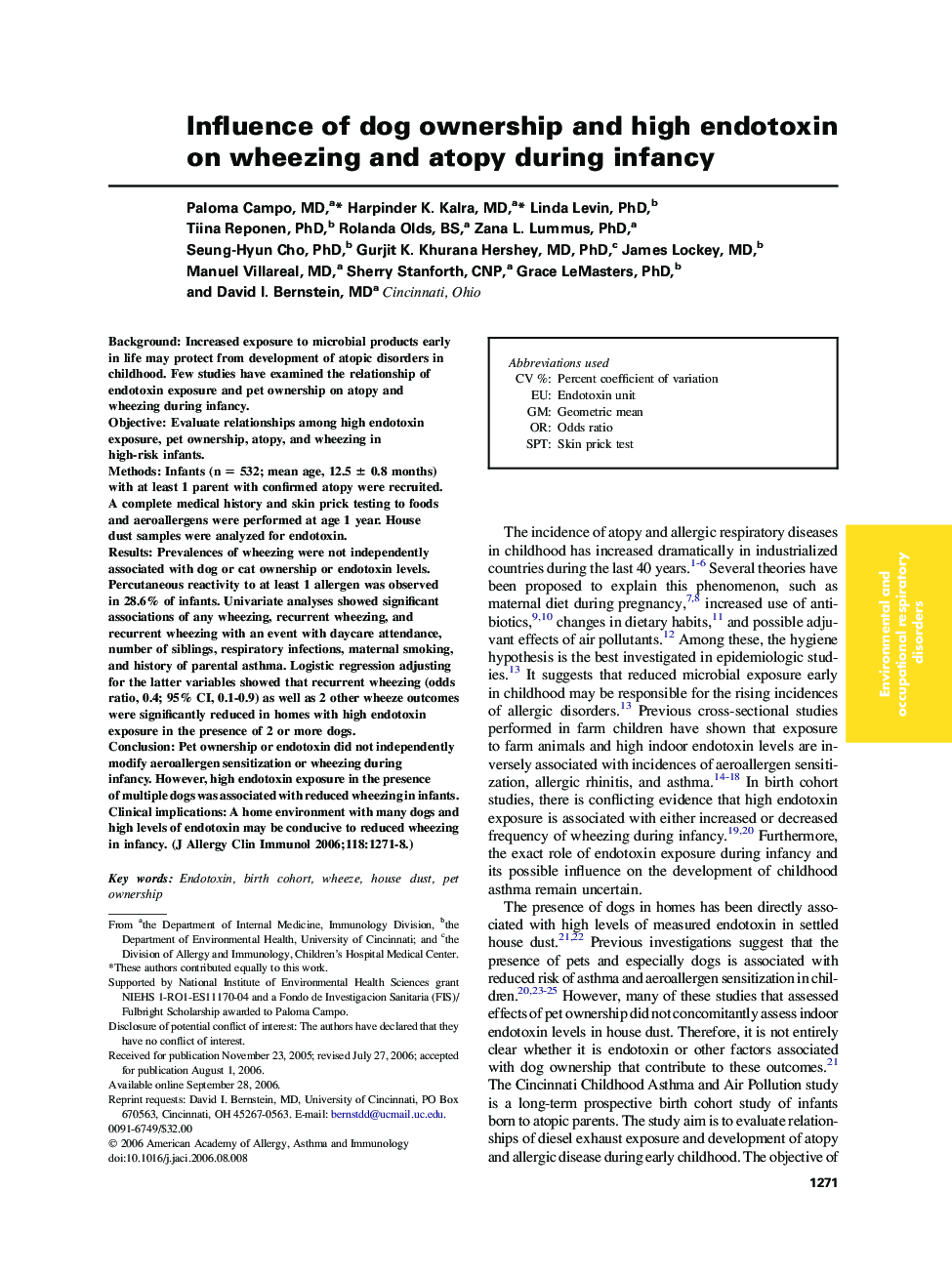| Article ID | Journal | Published Year | Pages | File Type |
|---|---|---|---|---|
| 3202224 | Journal of Allergy and Clinical Immunology | 2006 | 8 Pages |
BackgroundIncreased exposure to microbial products early in life may protect from development of atopic disorders in childhood. Few studies have examined the relationship of endotoxin exposure and pet ownership on atopy and wheezing during infancy.ObjectiveEvaluate relationships among high endotoxin exposure, pet ownership, atopy, and wheezing in high-risk infants.MethodsInfants (n = 532; mean age, 12.5 ± 0.8 months) with at least 1 parent with confirmed atopy were recruited. A complete medical history and skin prick testing to foods and aeroallergens were performed at age 1 year. House dust samples were analyzed for endotoxin.ResultsPrevalences of wheezing were not independently associated with dog or cat ownership or endotoxin levels. Percutaneous reactivity to at least 1 allergen was observed in 28.6% of infants. Univariate analyses showed significant associations of any wheezing, recurrent wheezing, and recurrent wheezing with an event with daycare attendance, number of siblings, respiratory infections, maternal smoking, and history of parental asthma. Logistic regression adjusting for the latter variables showed that recurrent wheezing (odds ratio, 0.4; 95% CI, 0.1-0.9) as well as 2 other wheeze outcomes were significantly reduced in homes with high endotoxin exposure in the presence of 2 or more dogs.ConclusionPet ownership or endotoxin did not independently modify aeroallergen sensitization or wheezing during infancy. However, high endotoxin exposure in the presence of multiple dogs was associated with reduced wheezing in infants.Clinical implicationsA home environment with many dogs and high levels of endotoxin may be conducive to reduced wheezing in infancy.
